by Alessandra Ressa
Did you know that next to the striking St. Antonio square stands the House of Snakes?
If you are one of those susceptible people who can’t stand the sight of slithering creatures, do not fear. The curious nick name was given to this unusual building because of the bronze snake at the top of the entrance. Located in via San Lazzaro 15, once a busy road now a beautiful pedestrian area, the bright yellow building has been known by Triestini for two and a half centuries as La Casa delle Bisse, literally: the house of snakes.
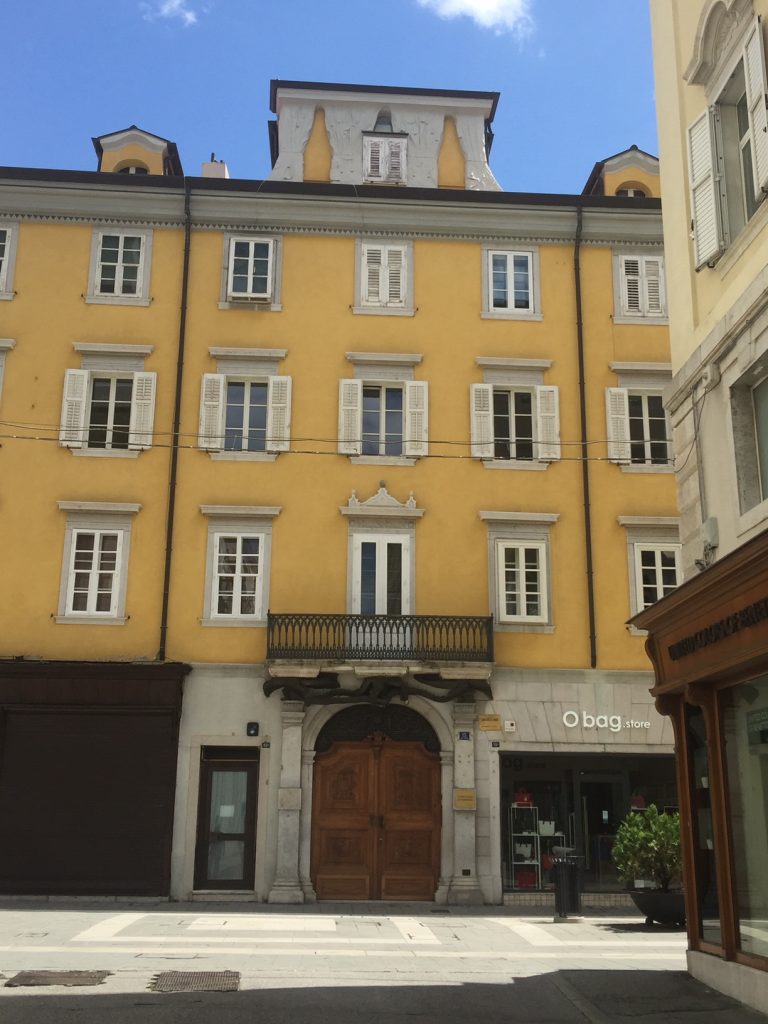
Built in 1771, it was originally called Casa Allodi and was commissioned to the well-known architect Bubolini. Although it was meant to be a neoclassical building with French rococo details, it was systematically modified as per architectural trends and housing needs. It is the case of the balcony, which was surely added in the mid 1800s. The third floor and the bizarre attic with theater-like chalk curtains were also added at a later time.
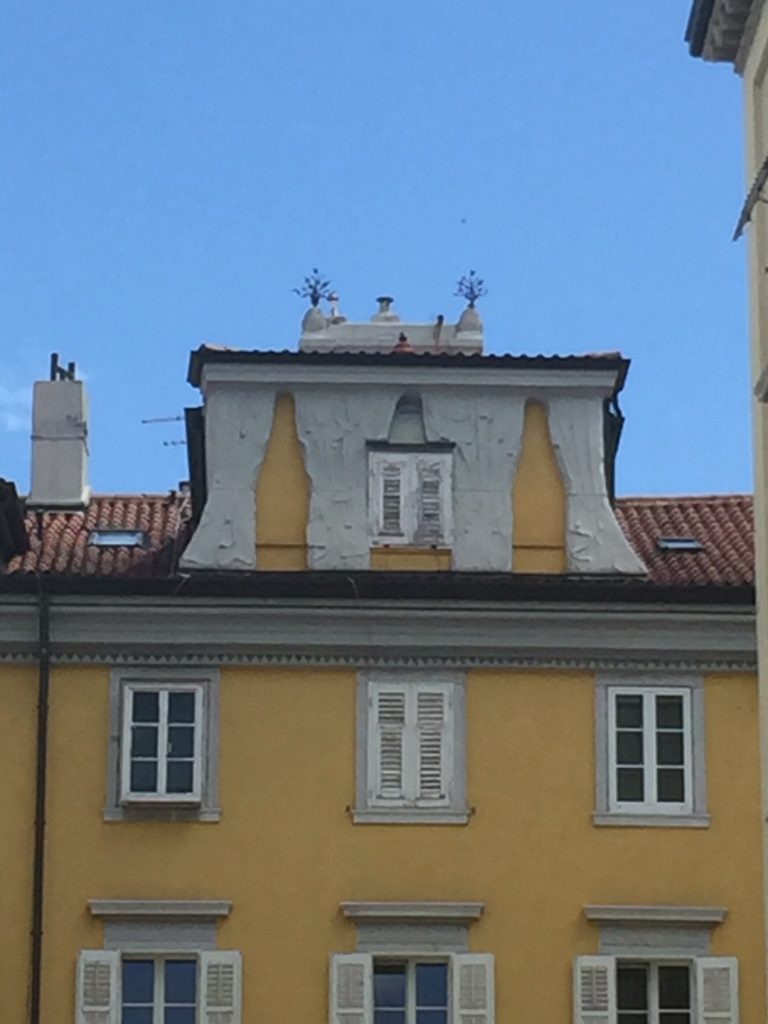
At the main entrance you will notice several unusual decorations. The Latin inscription Aedes anno MDCCLXXI ob aque inopiam aceto absoluta refers to the year the house was built in.
That year Trieste was hit by a terrible drought. In order to meet the deadline of the construction, since water was not available, builders used vinegar bought at a nearby wine shop to make mortar.
But it is of course the intertwining sculptural complex at the top of the entrance that catches the eye.
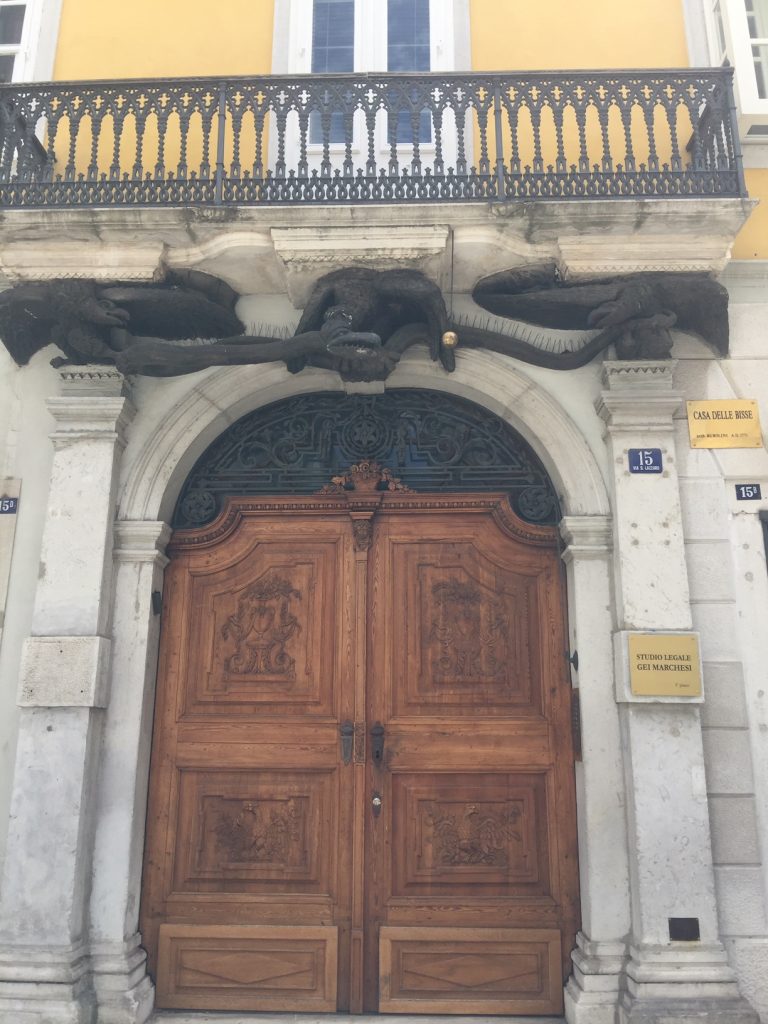
A big snake eating an apple (maybe a Biblical reference to the original sin?) is being torn apart by the three hostile eagles. The snake represents Napoleon. The eagles are the three nations which defeated him during the battle of Leipzig in 1813: Austria, Prussia and Russia. The golden globe hanging from the side like a pendulum represents the world that Napoleon’s army, victorious until then, was attempting to conquer.
The French invaded Trieste several times in those years. During one of the French occupations Napoleon’s eagle, the symbol of his empire, was carved on the wooden door. This unique decoration contributes to the fame of the entrance door to Casa delle Bisse, considered one of the most beautiful in Trieste. Naturally, the bronze decorations celebrating Napoleon’s definitive defeat came later. I doubt he would have appreciated being portrayed as a snake torn apart by the eagles.
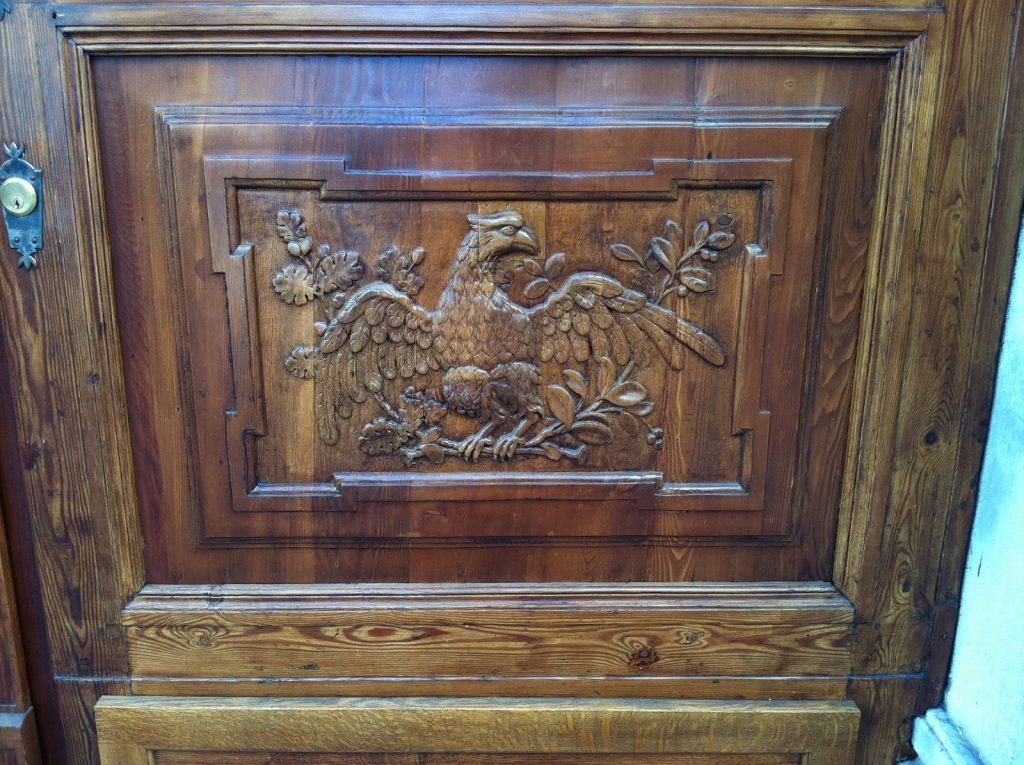
Among the many curious features, there is a cannon ball at the entrance stuck in the wall. A “gift”, as explained on the Latin inscription next to it (Hoc me ornamento galli affecerunt MDCCCIX) of the French army.
Many buildings in Trieste still have bullets and cannon balls stuck in their façades (even San Giusto cathedral preserves a British cannon ball). It is therefore possible that during the battle between the French and Austrian armies, the French perched in San Giusto castle and hit Casa delle Bisse while randomly shooting at the Austrians positioned in the city center. If this is the case, the ball must have ended up there later than 1809, which is the date written on the inscription. This historical mistake calls into question the authenticity and nationality of the cannon ball.
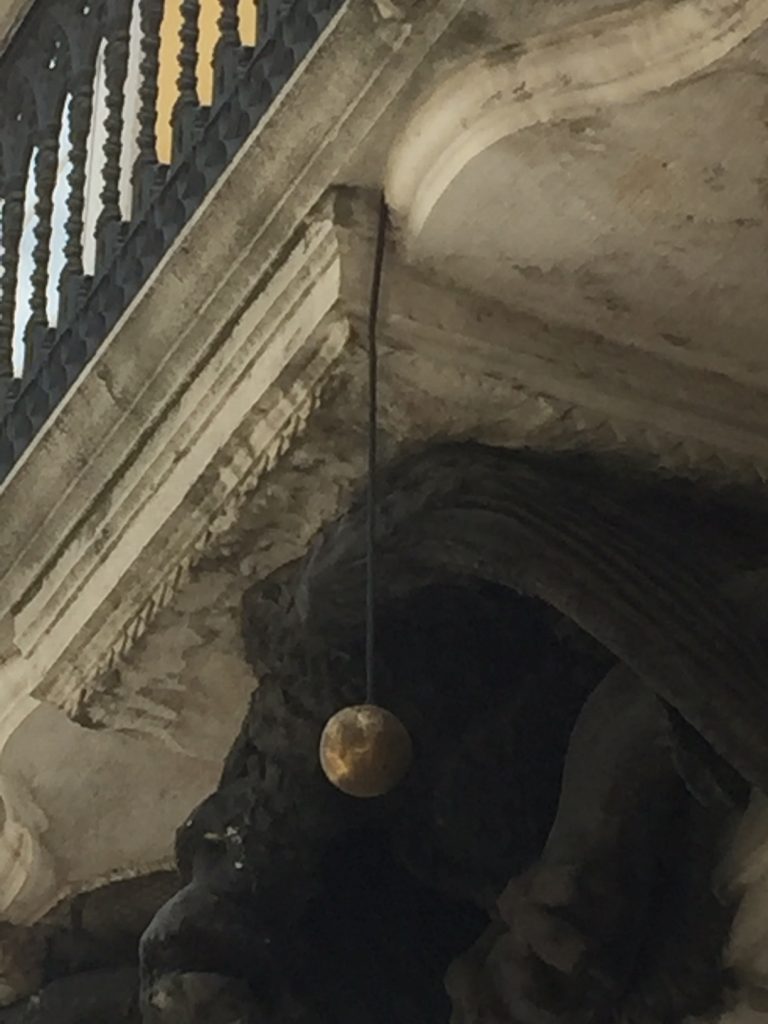
The word “bisse” refers to multiple reptiles, but you probably only noticed the one impressive snake at the entrance. The plural word was probably used because, if you pay close attention, you can spot several other serpents hidden among the decorations.

























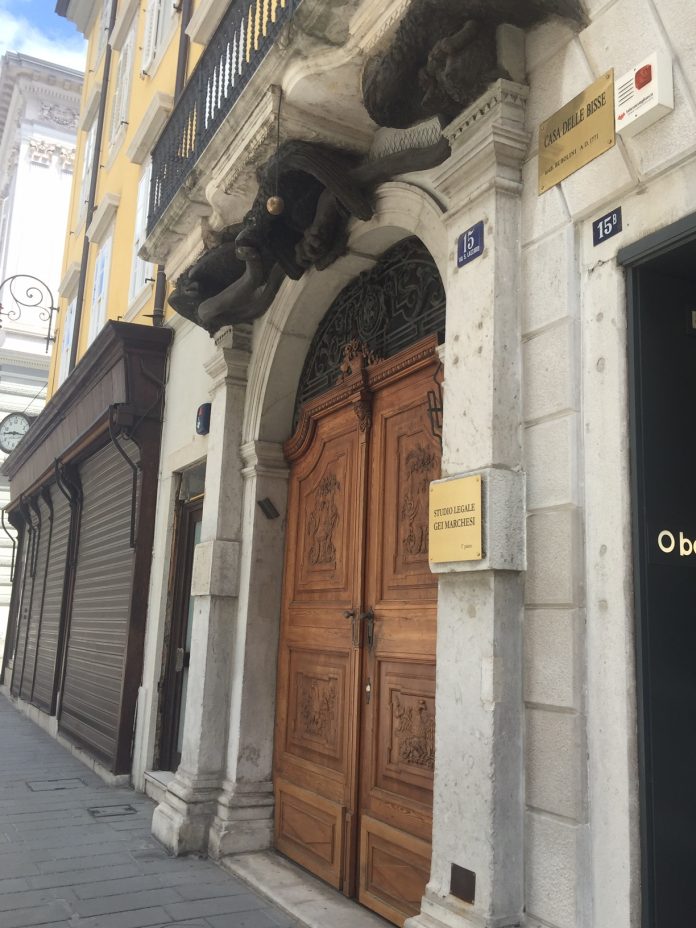




Erg interesting reading thank you
Thank you for this article, I have photographed this several times and always wondered about it’s history. That was a really interesting read!
A fine piece of research and evocative writing. It makes you want to seek out the door and find all the elements that you describe – well done, signorina! I am visiting Trieste from November 4th to 11th and will include the above in my wanderings. Mille grazie!